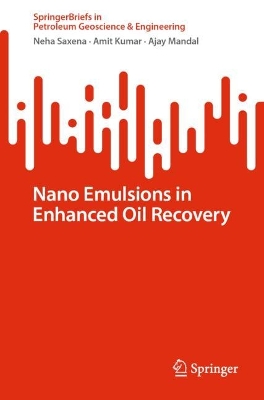SpringerBriefs in Petroleum Geoscience & Engineering
2 total works
Unconventional Resources in India: The Way Ahead
by Shivanjali Sharma, Amit Saxena, and Neha Saxena
Published 26 September 2019
This book addresses unconventional hydrocarbon resources in India and the prospects for their exploitation. Each chapter focuses on a particular unconventional resource, including gas hydrates, coal bed methane and shale, while the book as a whole takes into account the government's projections concerning these resources.
The book provides readers with essential information on the nation's energy requirements, methods of exploiting its available unconventional resources, and their contribution to meeting India's energy requirements. It also addresses the various geological conditions that are necessary for the exploration of these resources, and enables readers to understand the challenges that need to be overcome. Its logical, clearly structured chapters make the book an ideal starting point for readers interested in unconventional energy resources. It will especially benefit undergraduate and graduate students in the field of Energy Engineering, as well as academic researchers and industry professionals seeking an overview of the status quo of unconventional hydrocarbon resources in India.
Nano Emulsions in Enhanced Oil Recovery
by Neha Saxena, Amit Kumar, and Ajay Mandal
Published 8 August 2022
This book focuses on the use of nanoemulsion in enhanced oil recovery, along with a brief information about the emulsion and its types and different physico-chemical properties used to analyse the efficiency of the emulsions and nanoemulsions. The author discussed about the nanoemulsion, classification of emulsions and nanoemulsion and use of nanoemulsions in petroleum industry. A special attention has been laid on nanoemulsion and its advantages over commercial product, physico-chemical properties like emulsification, interfacial tension and wettability alteration study as a screening criteria for application in EOR. Given this content, this book offers an assessment for the undergraduate and postgraduate students of petroleum and chemical engineering along with the researchers working in the field of EOR. It is a subject of interest for oil and gas industry professionals.

